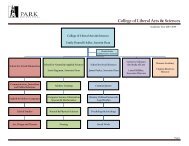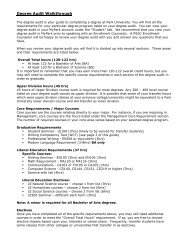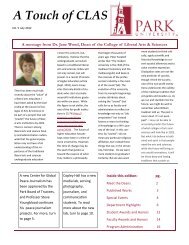How to Write a Radio Serial Drama for Social Development- PDF
How to Write a Radio Serial Drama for Social Development- PDF
How to Write a Radio Serial Drama for Social Development- PDF
Create successful ePaper yourself
Turn your PDF publications into a flip-book with our unique Google optimized e-Paper software.
118 Chapter Eight: Scene <strong>Development</strong><br />
Topics in This Chapter<br />
❖<br />
❖<br />
❖<br />
❖<br />
❖<br />
Episode and scene divisions: The early episodes<br />
Episode treatments<br />
The plot chart<br />
Guidelines <strong>for</strong> development and use of scenes<br />
Weaving the elements of a scene <strong>to</strong>gether<br />
Episode and Scene Divisions: The Early Episodes<br />
Many writers—particularly those who are new at Enter-Educate work—find<br />
it quite challenging <strong>to</strong> divide an episode in<strong>to</strong> scenes that depict several plots<br />
simultaneously. It is easier <strong>for</strong> both the writer and the audience if each of the<br />
plots is introduced separately in the early episodes of a serial. For a serial<br />
broadcast weekly <strong>for</strong> six months or more, the following scheme would be an<br />
appropriate way <strong>to</strong> divide the episodes and <strong>to</strong> introduce the main plot and<br />
three sub-plots.<br />
• Episodes 1 and 2: All scenes relate <strong>to</strong> the main plot.<br />
• Episodes 3 and 4: Scene 1 = main plot<br />
Scene 2 = sub-plot A<br />
Scene 3 = main plot<br />
Scene 4 = sub-plot A<br />
• Episodes 5 and 6: Scene 1 = main plot<br />
Scene 2 = sub-plot B<br />
Scene 3 = sub-plot A<br />
Scene 4 = sub-plot B<br />
• Episodes 7 and 8: Scene 1 = main plot<br />
Scene 2 = sub-plot C<br />
Scene 3 = sub plot B<br />
Scene 4 = sub-plot C<br />
From this point on, the plots can be mixed in any sequence, depending<br />
on the progress of the s<strong>to</strong>ry. All four plots need not appear in every episode.<br />
Sometimes two plots can be used alternately <strong>to</strong> create four scenes.<br />
Even when the writer feels confident in working with more than one plot<br />
from the outset, it is easier <strong>for</strong> the audience <strong>to</strong> understand the s<strong>to</strong>ry if the<br />
various plots are introduced slowly, with two or, at most, three plots starting<br />
up in the same episode. It is also important, particularly in the early episodes,<br />
<strong>to</strong> link scenes <strong>to</strong>gether clearly so that the audience is not confused about<br />
what is happening. Even as the s<strong>to</strong>ry moves from plot <strong>to</strong> sub-plot <strong>to</strong> subplot,<br />
the dialogue should give some indication of how each plot links with<br />
the others. (In<strong>for</strong>mation on linking scenes is contained later in this chapter.)
















